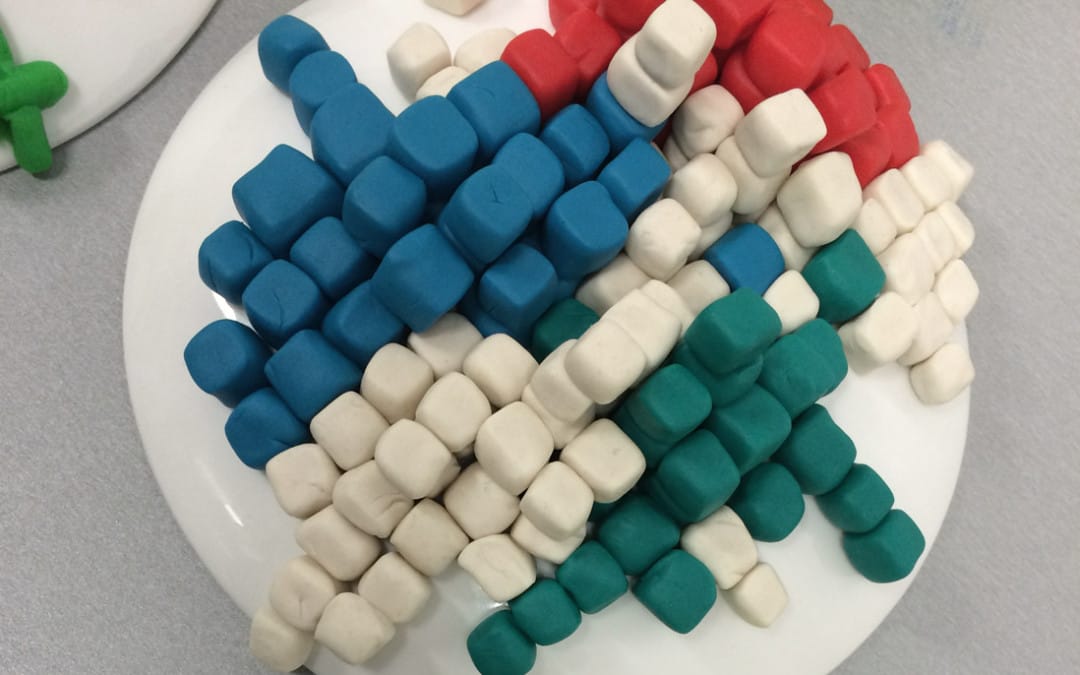[db_post_title]
[db_post_meta][db_feature_image]
A pan discipline event about collaboration is probably one of the best ways to interrogate the subject. What may be an issue for one discipline may have been solved by others or at least considered from a different perspective. With an audience ranging from academics, project teams, community engagement experts and social media gurus, the Be2Camp Oxon event on Tuesday 13th October discussed collaboration from six perspectives.
Be2Camp events exist to bridge the gap between new web technologies and ideas and the construction industry. Collaboration all served up with cake, Lego and a Play-doh building competition.
As technology becomes more divisive and people more disparate, organisations like Streets Re-imagined founded by Fin McNab work within neighbourhoods to generate community spirit, needed for social cohesion. 71% of adults played outside when they were children compared to just 21% of children today.
Effects of @FinMcNab‘s projects – reduced traffic speed and volume, increased sense of safety amongst residents #be2campoxon
— Su Butcher (@SuButcher) October 13, 2015
Po Yung from Clarkson Alliance shared the people focused management techniques used in-house to create more consistent project success. The focus of the talk was how engaging teams is possible through understanding how people are fundamentally motivated. As people are the ones delivering projects, it should be a priority to improve relationships to encourage the best results for clients.
‘People is what matters’ to achieving project success – understanding emotion and thinking – very interesting talk by @poyung #be2campoxon
— Finlay McNab (@FinMcNab) October 13, 2015
Jen Forakis from Hoop Architecture explored the barriers to true collaboration in architectural practices. More traditional views stifle joint creativity, where often junior architects are excluded from client meetings.
Recommended reading: Client & Architect – developing the essential relationship #be2campoxon http://t.co/1zSPZmEhoR
— Su Butcher (@SuButcher) October 13, 2015
Sustainability expert Martin Brown of Fairsnape, and Construction Technology and PR consultant Paul Wilkinson of PWCom, shared the findings from a recent Constructing Excellence’s Collaborative Working Champion’s discussion. The topic addressed the best and worst case scenarios facing the industry by 2025, in time for the Governments Construction Strategy targets. Starting in a face-to-face meeting, in true collaborative style, the discussion moved onto social media enabling a further 24 participants to add their views. The findings will be published shortly.
One of the worst case scenarios for 2025 future of the industry “male, pale and stale” @fairsnape @EEPaul #be2campoxon
— Po Yung (@poyung) October 13, 2015
Jenni Bartlett from University of Central Lancashire (UCLAN) shared research behind how people adapt to collaborative working. Jenni studies how creative thinking affects design stages because of how people collaborate. There are a number of tools available to manage the technical and contractual aspects of collaboration but little is done to support people as they grapple with the humanistic aspects.
. @Meme_Cloud adversarial relationships are not the primary barrier to effective collaboration; the social stuff matters #be2campOxon
— H o O p (@MakeHoop) October 13, 2015
Su Butcher, who recently starred in the B1M’s videos about BIM, social media and collaboration discussed the 6 key areas needed for Collaborative Working set out by Constructing Excellence and how these areas aren’t currently being achieved.
#Be2campoxon … aligned comm’l arrangements, common processes, performance measuremt, long-term relationships. – @SuButcher + social media
— Paul Wilkinson (@EEPaul) October 13, 2015
Our takeaway from the event is that attitudes towards collaboration need to be focused around the people collaborating. Although this may seem straightforward what is needed to achieve collaboration within the industry is still lacking. There are tools and processes to help shape the technical aspects of collaboration but there is very little Government backed support for how people can collaborate better on a human level. As discussed at Be2Camp Oxon, the school system pits us against each other as individuals. Gaining a grade as a group is rare so we are all vying for our own achievements so is it surprising that people aren’t equipped for collaboration when they leave?

